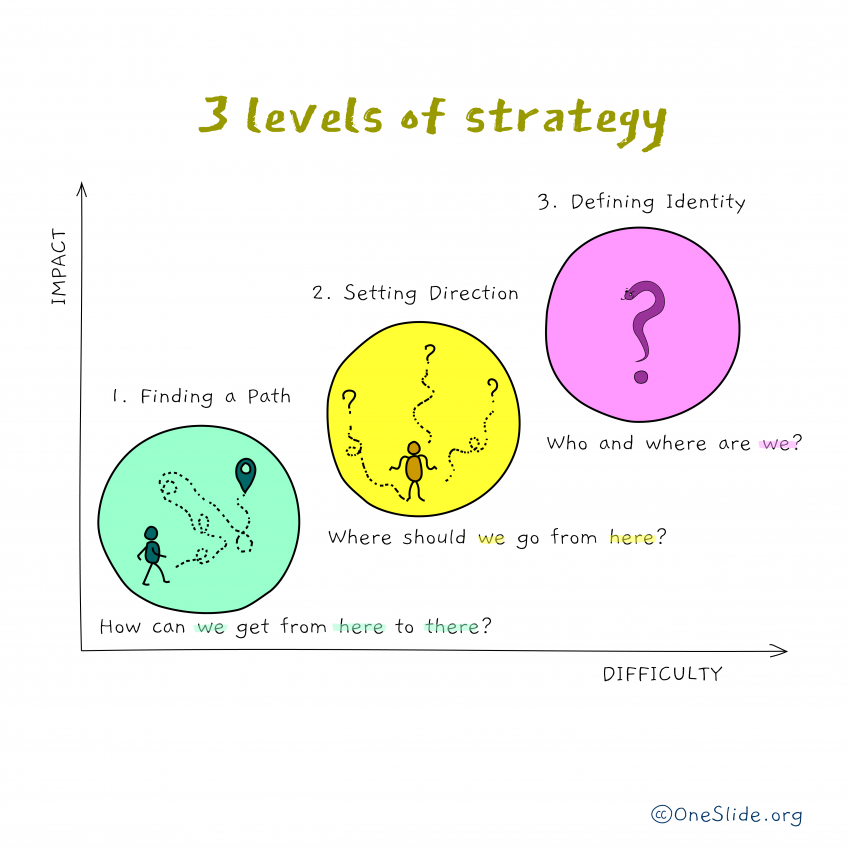Editable Google Slide (CC-BY-4.0)
Merriam-Webster’s dictionary defines strategy as “the skill of making or carrying out plans to achieve a goal”. There are at least three assumptions that this definition rests upon: (1) that the we have a known goal, (2) that we know where we are now and (3) that we know who we are. It’s true that assumptions (2) and (3) are not explicit in the definition, but most people would feel that they are still implied in it.
However in practice, it’s rare to find a situation where all the three elements (identity, current location and desired destination) are clearly understood and the only unknown thing is the optimal path from A to B. More often strategists find themselves in situations where either desired destination is not yet properly set or even the basic location and identify of the subject is not defined clearly. These situations create a more open opportunity space, success is harder to define and stakes are higher.
We find it useful to think about 3 levels of strategy, depending on how much is assumed as known:
- Finding a path. First level is about answering the question “How can we get from here to there?”. Identity, current location and desired destination are all known. It’s relatively easy to track progress and set up feedback loops for steering. Optimal path finding can still be very difficult if the environment is changing under our feet.
- Setting direction. Second level is about answering the question “Where should we go from here?”. Identity and current location are still assumed to be known, but desired destination is to be discovered. By definition there are many possible directions, but in order to choose one that suits you most, it’s critical to clearly know (and have a shared understanding of) who you are.
- Defining Identity. Third and in a way most difficult level of strategy is dealing with the question of identity: who are you and where are you? Before you have a clear and shared answer to this question talking about where to go or how to get there is not going to be very productive. A lot of frustrations in strategy sessions stem from the fact that different people have different assumptions about identity, yet none of those assumptions are clearly stated, while the team is trying to discuss where to go or how to get somewhere. Level 3 strategy is extremely difficult because it is not grounded in a lot of rational, measurable stuff. It’s in certain way “anchorless”, more art than science and is about people with their feelings, not data or optimal solutions.
Let us reiterate: all 3 levels are valid and important and there are tools for all three. The problems come when there is no clarity or shared understanding in terms of which level you are strategizing at or (even worse) you are trying to do all 3 at the same time. Managing expectations and setting boundaries is key: if your Client asked you about how to get from A to B, then coming back to her with ideas about how to redefine her brand’s identity may not be exactly helpful. Even if those are good ideas. On the other hand, making sure that you have a clear understanding of what her brand stands for is critical for you to be able to help her move it from A to B. As Cheshire Cat and George Harrison liked to say “if you don’t know where you’re going, any road will take you there”. That’s the big danger of mixing up various levels of strategy: if you are trying to discover who you are, where you are and where you are going all at the same time – you might as well take any road, or just keep standing where you are – it’s not going to make much difference, or much sense.
